Sputter target selection guide by metal
When selecting a suitable target for SEM sputter coating, metal grain size is an important consideration. The following provides a guide to this and some other key features.
Quick guidance for SEM
FE-SEM
- The smallest grain size high resolution FE-SEM – using a high vacuum sputter coater – is usually considered to be chromium or tungsten, but both oxidise on contact with air so specimens ideally need to be observed soon after coating or stored under vacuum.
- Iridium has a very small grain size (typically sub-nanometer) and does not oxidise. High vacuum required and it is an expensive metal.
- The smallest grain size high for FE-SEM using a standard vacuum (rotary pumped) sputter coater is with platinum or platinum/palladium.
W-SEM
Coating for tungsten SEM – using a standard vacuum (i.e.rotary pumped) sputter coater: platinum, gold, gold/palladium platinum/palladium
See also our target selection guide by brand and model. Target selection by brand and model.
Sputtering target selection by metal
Click on headers to go to ordering information.
Chromium (Cr) sputterjng targets
Chromium is widely used for high resolution sputter coating for FE-SEM applications, typically giving a sub-nanometre grain size. Chromium is an oxidising metal and requires a high vacuum sputter coater (e.g. Safematic high vacuum sputter coater .SEM samples that have been newly coated with Cr will quickly oxidise on contact with air and should therefore be observed immediately or stored under vacuum. See: EM-Storr vacuum storage containers.
A typical sputtered grain size is around 5nm and the metal gain structure can often be visualised in an SEM at magnifications of 30,000X and above. Historically gold sputter coating was popular for SEM and is still widely used in many laboratories, even though other metals offer finer grain coating characteristics.
Gold/Palladium (Au/Pd) sputtering targets
Has the same properties (sputtering rate, secondary electron yield etc.) as gold, but the sputtered grain size of the film is usually smaller. Palladium is thought to inhibit the growth of gold grains on the specimen surface during the sputtering process.
Iridium (Ir) sputtering targets
Sputter coated iridium films exhibit a very fine grain size on virtually all materials and is an excellent all-round fine grain coating material for FESEM applications. For many it is the material of choice for high and ultra-high resolution FE-SEM imaging. Iridium has the added benefits of being a non-oxidising material (no storage issues) and having a high SE yield – it is replacing chromium for high resolution SEM coating. To sputter iridium successfully requires the use of a high vacuum, high resolution sputter coater. Iridium sputtering rates are lower than chromium. Iridium targets are thicker due to fabricated constraints (it is a brittle metal), but overall costs are normally lower than for Pt or Pt/Pd.
Iridium is also an excellent alternative material for coating SEM samples which have to be analyzed for carbon by EDX or WDX. A thin layer is enough to give excellent conductivity and since the material is very thin it hardly interferes with EDX or WDX analysis.
Indium Tin Oxide (ITO) sputtering targets
ITO targets consist of indium oxide and tin oxide with a 90/10 wt% composition. ITO is an interesting material since it is both electrically conductive and light transparent. Applications in SEM include Cathodeluminescence imaging and/or the analysing of non-conductive samples with a detector/spectrometer. ITO is also useful for coating glass coverslips for correlative microscopy and array tomography applications.
ITO sputter coating for Correlative Microscopy – Tips & Tricks for Scanning Electron and Fluorescence Imaging – see: this link
Nickel (Ni) sputtering targets
Nickel is an alternative sputter coating material for SEM EDX applications and BSE imaging. It is not ideal for SE imaging and the coating oxidises slowly. It has a (very) low sputtering rate due to its low work function and the fact that as a magnetic material it “short circuits” the magnet in the DC magnetron sputter head, resulting in a less dense plasma. In a standard vacuum (rotary pumped) SEM sputter coater, the coating contains a mixture of Ni and Ni-oxide. The Ni coating layer can enhance elements through X-ray fluorescence. If needed, nickel coatings can be removed with hydrochloric acid or nitric acid.
Palladium (Pd) sputtering targets
Palladium sputtering is sometimes used instead of carbon for x-ray microanalysis (application dependent).
Platinum/Palladium (Pt/Pd) sputtering targets
A Pt/Pd alloy (80/20) has a similar grain size and SE yield as pure Pt, but is less senstive to “stress cracking” under the SEM beam. Platinum/Palladium is a suitable all-round sputter coating material for FESEM applications when thin coatings are used.
Platinum (Pt) sputtering targets
Sputter coated platinum typically gives a grain size of around 2-3nm and offers the best routine fine grain coating from a rotary pumped SEM coater, such as the Safematic CCU-010LV. Platinum has an excellent SE yield, but is higher work function results in slower sputtering than gold (typically 60% slower). Platinum sputtered films tend to be sensitive to “stress cracking” when oxygen is present (oxygen can be released from some porous SEM samples).
Silver (Ag) sputtering targets
Silver sputtering is a most suitable and low cost alternative to gold sputtering in many SEM imaging applications in the low and medium magnifications ranges. For SEM and FIB/SEM silver is a widely underestimated coating material and has the highest conductivity of all metals. When using EDS, silver can be an alternative to gold coating for many biological samples if P, Cl and S need to be analysed. The sputtering rate of silver is similar to that of gold, but the SE yield is somewhat lower than for Pt, Au or Ir.
The grain size of sputtered silver is similar or slightly larger than gold, except for samples containing halogens which can result in coarser sputtered grains. Sputtered silver coatings can tarnish (in the presence of halogens) and are less suitable for long term storage. Generally silver is an excellent low cost coating material for many less demanding SEM imaging applications and for table top SEMs.
An additional advantage of silver sputtering is that coatings can be dissolved and the sample surface studied in the original conditions. Removal of Au, Au/Pd, Pt and Ir coatings is more difficult and involves very harsh chemicals. Silver coatings can be removed with Farmer’s reducer (a mixture of potassium ferricyanide and sodium thiosulfate).
Tungsten (W) sputtering targets
Tungsten is an excellent alternative for ultra-high resolution SEM coating. Sputter coated tungsten has a very fine grain size and tends to be less visible than chromium, but like chromium it oxidises rapidly on contact with air. For this reason samples must be imaged immediately after coating or stored under vacuum (See: EM-Storr vacuum storage containers). Tungsten has a low sputtering rate, but due to its high atomic number the SE yield tends to be higher.
Examples of other sputtering materials – although not commonly used in EM
Carbon (C) targets
Although it is possible to sputter carbon, the deposition rate is very low and therefore impractical for most applications. Thermal evaporation using instruments such as the Safematic CT-010 carbon coater is recommended for SEM and TEM carbon coating applications.
Cobalt (Co) targets
Cobalt is not generally used for SEM coating applications. It has a very low sputtering rate due to its low work function and the fact that as a magnetic materials it “short circuits” the magnet in the DC magnetron sputter head with a less dense plasma as a result. In a standard SEM sputter coater, the sputtered films contains a mixture of Co and Co-oxide. Cobalt coated layers can enhance elements through X-ray fluorescence.
Indium (In) targets
Indium is not generally used for SEM coating applications. It has a very low sputtering rate due to its low work function. In a standard SEM coater, the coating contains a mixture of In and In-oxide. Indium coated layers can enhance elements through X-ray fluorescence.
Tin (Sn) targets
Tin is not generally used for SEM coating applications. It has a very low sputtering rate due to its low work function. In a standard SEM coater, the coating contains a mixture of Sn and Sn-oxide. Tin coated layers can enhance elements through X-ray fluorescence.
Zinc (Zn) targets
Zinc is not generally used for SEM coating applications. It has a very low sputtering rate due to its low work function. In a standard SEM coater, the coating contains a mixture of Zn and Zn-oxide. Zinc coated layers can enhance elements through X-ray fluorescence.

Ordering information:
Chromium (Cr) targets
-
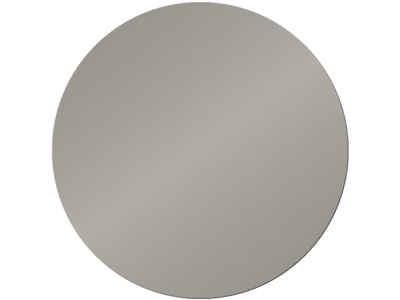
Chromium target – Ø19 x 1.5mm disc, 99.95% Cr
Chromium sputter coater target – Ø19 x 1.5mm disc, 99.95% Cr (each)
Price On Request Read more -

Chromium target – Ø57 x 0.3mm disc, 99.95% Cr
Chromium sputter coater target – Ø24 x 0.3mm disc, 99.95% Cr (each)
Price On Request Read more -

Chromium target – Ø38 x 3.2mm disc, 99.95% Cr
Chromium sputter coater target – Ø38 x 3.2mm disc, 99.95% Cr (each)
Price On Request Read more -

Chromium target – Ø57 x 0.5mm disc, 99.95% Cr
Chromium sputter coater target, Ø57 x 0.5mm disc, 99.95% Cr (each)
Price On Request Read more -

Chromium target – Ø57 x 3.2mm disc, 99.95% Cr
Chromium sputter coater target – Ø57 x 3.2mm disc, 99.95% Cr (each)
Price On Request Read more -

Chromium target – Ø60 x 0.5mm disc, 99.95% Cr
Chromium sputter coater target – Ø60 x 0.5mm disc, 99.95% Cr (each)
Price On Request Read more -

Chromium target – Ø54 x 0.5mm disc, 99.95% Cr
Chromium sputter coater target – Ø54 x 0.5mm disc, 99.95% Cr
Price On Request Read more
Gold (Au) targets
-
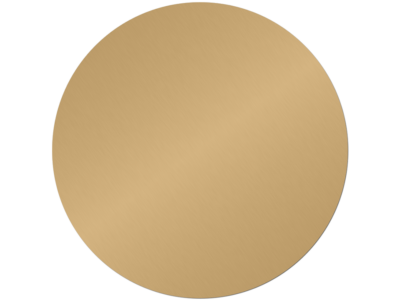
Gold target – Ø54 x 0.2mm disc, 99.99% Au
Gold sputter coater target – Ø54 disc- 99.99% Au
Price On Request Read more -

Gold target – Ø54 x 0.3mm disc, 99.99% Au
Gold sputter coater target – Ø54 disc- 99.99% Au
Price On Request Read more -

Gold target – Ø54 x 0.4mm disc, 99.99% Au
Gold sputter coater target – Ø54 disc- 99.99% Au
Price On Request Read more -

Gold target – Ø19 x 1.5mm disc, 99.99% Au
Gold sputter coater target – Ø19 x 1.5mm disc, 99.99% Au (each)
Price On Request Read more -

Gold target – Ø24 x 0.2mm disc, 99.99% Au
Gold sputter coater target – Ø24 x 0.2mm disc, 99.99% Au (each)
Price On Request Read more -

Gold target – Ø38 x 0.2mm disc, 99.99% Au
Gold sputter coater target – Ø38 x 0.2mm disc, 99.99% Au (each)
Price On Request Read more -

Gold target – Ø38 x 0.4mm disc- 99.99% Au
Gold sputter coater target – Ø38 x 0.4mm disc, 99.99% Au (each)
Price On Request Read more -

Gold target – Ø50 x 0.1mm disc, 99.99% Au
Gold sputter coater target – Ø50 x 0.1mm disc, 99.99% Au (each)
Price On Request Read more -

Gold target – Ø50 x 0.2mm disc, 99.99% Au
Gold sputter coater target – Ø50 x 0.2mm disc, 99.99% Au (each)
Price On Request Read more -

Gold target – Ø57 x 0.1mm disc, 99.99% Au
Gold sputter coater target – Ø57 x 0.1mm disc, 99.99% Au (each)
Price On Request Read more -

Gold target – Ø57 x 0.2mm disc, 99.99% Au
Gold sputter coater target – Ø57 x 0.2mm disc, 99.99% Au (each)
Price On Request Read more -

Gold target – Ø57 x 0.3mm disc, 99.99% A
Gold sputter coater target – Ø57 x 0.3mm disc, 99.99% Au (each)
Price On Request Read more -

Gold target – Ø57 x 0.4mm disc, 99.99% Au
Gold sputter coater target – Ø57 x 0.4mm disc, 99.99% Au (each)
Price On Request Read more -

Gold target – Ø60 x 0.1mm disc, 99.99% Au
Gold sputter coater target- Ø60 x 0.1mm disc, 99.99% Au (each)
Price On Request Read more -

Gold target – Ø60 x 0.2mm disc, 99.99% Au
Gold sputter coater target – Ø60 x 0.2mm disc, 99.99% Au (each)
Price On Request Read more -

Gold target – Ø62 x 0.1mm disc, 99.99%
Gold sputter coater target – Ø62 x 0.1mm disc, 99.99% Au (each)
Price On Request Read more -

Gold target – Ø62 x 0.2mm disc, 99.99% Au
Gold sputter coater target – Ø62 x 0.2mm disc, 99.99% Au (each)
Price On Request Read more -

Gold Sputter Target, Ø28 x 0.2mm Disc, 99.99% Au
Gold Sputter Target, Ø28 x 0.2mm Disc, 99.99% Au (each)
Price On Request Read more -

Gold Sputter Target, Ø28 x 0.4mm Disc, 99.99% Au
Gold Sputter Target, Ø28 x 0.4mm Disc, 99.99% Au (each)
Price On Request Read more
Gold Palladium (Au/Pd) targets
-
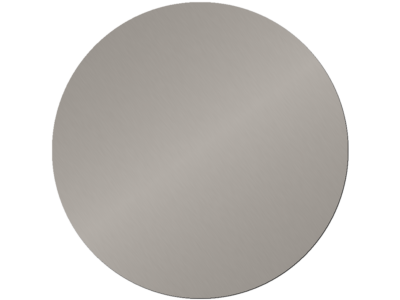
Gold/palladium target – Ø54 x 0.1mm disc, 80/20 Au/Pd, 99.99% Au/Pd
Gold Palladium sputter coater target – Ø54 disc, 99.99% Au/Pd
Price On Request Read more -

Gold/palladium target – Ø54 x 0.1mm disc, 60/40 Au/Pd, 99.99% Au/Pd
Gold Palladium sputter coater target – Ø54 disc, 99.99% Au/Pd
Price On Request Read more -

Gold/palladium target – Ø54 x 0.2mm disc, 60/40 Au/Pd, 99.99% Au/Pd
Gold Palladium sputter coater target – Ø54 disc, 99.99% Au/Pd
Price On Request Read more -

Gold/Palladium – Ø54 x 0.2mm disc, 80/20 Au/Pd, 99.99% Au/Pd
Gold Palladium sputter coater target – Ø54 disc, 99.99% Au/Pd
Price On Request Read more -

Gold/palladium target – Ø19 x 1.5mm disc, Au/Pd 60/40- 99.99%, Au/Pd
Gold/palladium sputter coater target – Ø19 x 1.5mm disc, Au/Pd 60/40 (each)
Price On Request Read more -

Gold/palladium target – Ø19 x 1.5mm disc, Au/Pd 80/20- 99.99%, Au/Pd
Gold/palladium sputter coater target – Ø19 x 1.5mm disc, Au/Pd 80/20 – 99.99% Au/Pd (each)
Price On Request Read more -

Gold/palladium target – Ø24 x 0.2mm disc, 80/20 Au/Pd- 99.99%, Au/Pd
Gold/palladium sputter coater target – Ø24 x 0.2mm disc, 80/20 Au/Pd (each)
Price On Request Read more -

Gold/palladium target – Ø38 x 0.2mm disc
Gold/palladium sputter coater target – Ø38 x 0.2mm disc, 80/20 Au/Pd – 99.99% Au/Pd (each)
Price On Request Read more -

Gold/palladium target – Ø38 x 0.4mm disc
Gold/palladium sputter coater target – Ø38 x 0.4mm disc, 80/20 Au/Pd – 99.99% Au/Pd (each)
Price On Request Read more -

Gold/palladium target – Ø50 x 0.1mm disc, 60/40 Au/Pd- 99.99%, Au/Pd
Gold/palladium sputter coater target – Ø50 x 0.1mm disc, 60/40 Au/Pd (each)
Price On Request Read more -

Gold/palladium target – Ø50 x 0.1mm disc, 80/20 Au/Pd- 99.99%, Au/Pd
Gold/palladium sputter coater target – Ø50 x 0.1mm disc, 80/20 Au/Pd (each)
Price On Request Read more -

Gold/palladium target – Ø50 x 0.2mm disc, 60/40 Au/Pd, 99.99%, Au/Pd
Gold/palladium sputter coater target – Ø50 x 0.2mm disc, 60/40 Au/Pd- 99.99% Au/Pd (each)
Price On Request Read more -

Gold/palladium target – Ø50 x 0.2mm disc, 80/20 Au/Pd- 99.99%, Au/Pd
Gold/palladium sputter coater target – Ø50 x 0.2mm disc, 80/20 Au/Pd- 99.99% Au/Pd (each)
Price On Request Read more -

Gold/palladium target – Ø57 x 0.1mm disc, 60/40 Au/Pd, 99.99%, Au/Pd
Gold/palladium sputter coater target – Ø57 x 0.1mm disc, 60/40 Au/Pd, 99.99% Au/Pd (each)
Price On Request Read more -

Gold/palladium target – Ø57 x 0.1mm disc, 80/20 Au/Pd, 99.99%, Au/Pd
Gold/palladium sputter coater target – Ø57 x 0.1mm disc, 80/20 Au/Pd, 99.99% Au/Pd (each)
Price On Request Read more -

Gold/palladium target – Ø57 x 0.2mm disc, 60/40 Au/Pd, 99.99%, Au/Pd
Gold/palladium sputter coater target – Ø57 x 0.2mm disc, 60/40 Au/Pd, 99.99% Au/Pd (each)
Price On Request Read more -

Gold/palladium target – Ø57 x 0.2mm disc, 80/20 Au/Pd, 99.99%, Au/Pd
Gold/palladium sputter coater target -Ø57 x 0.2mm disc, 80/20 Au/Pd, 99.99% Au/Pd (each)
Price On Request Read more -

Gold/palladium target – Ø60 x 0.1mm disc, Au/Pd 60/40, 99.99%, Au/Pd
Gold/palladium sputter coater target – Ø60 x 0.1mm disc, Au/Pd 60/40 (each)
Price On Request Read more -

Gold/palladium target – Ø60 x 0.1mm disc, 80/20, 99.99%, Au/Pd
Gold/palladium sputter coater target – Ø60 x 0.1mm disc, Au/Pd 80/20 (each)
Price On Request Read more -

Gold/palladium target – Ø60 x 0.2mm disc, Au/Pd 60/40, 99.99%, Au/Pd
Gold/palladium sputter coater target – Ø60 x 0.2mm disc, Au/Pd 60/40 (each)
Price On Request Read more -

Gold/palladium target – Ø60 x 0.2mm disc, 80/20 Au/Pd, 99.99%, Au/Pd
Gold/palladium sputter coater target – Ø60 x 0.2mm disc, 80/20 Au/Pd
Price On Request Read more -

Gold/palladium target – Ø60 x 0.4mm disc, 60/40 Au/Pd
Gold/palladium sputter coater target – Ø60 x 0.4mm disc – 60/40 Au/Pd, 99.99% Au/Pd (each)
Price On Request Read more -

Gold/palladium target – Ø62 x 0.1mm disc, Au/Pd 80/20- 99.99% Au/Pd
Gold/palladium sputter coater target – Ø62 x 0.1mm disc, Au/Pd 80/20- 99.99% Au/Pd (each)
Price On Request Read more -

Gold/Palladium Sputter Target, Ø28 x 0.2mm Disc, 60/40 Au/Pd, 99.99% Au/Pd
Gold/Palladium Sputter Target, Ø28 x 0.2mm Disc, 60/40 Au/Pd, 99.99% Au/Pd (each)
Price On Request Read more -

Gold/Palladium Sputter Target, Ø28 x 0.2mm Disc, 80/20 Au/Pd, 99.99% Au/Pd
Gold/Palladium Sputter Target, Ø28 x 0.2mm Disc, 80/20 Au/Pd, 99.99% Au/Pd (each)
Price On Request Read more -

Gold/Palladium Sputter Target, Ø28 x 0.4mm Disc, 60/40 Au/Pd, 99.99% Au/Pd
Gold/Palladium Sputter Target, Ø28 x 0.4mm Disc, 60/40 Au/Pd, 99.99% Au/Pd (each)
Price On Request Read more -

Gold/Palladium Sputter Target, Ø28 x 0.4mm Disc, 80/20 Au/Pd, 99.99% Au/Pd
Gold/Palladium Sputter Target, Ø28 x 0.4mm Disc, 80/20 Au/Pd, 99.99% Au/Pd (each)
Price On Request Read more
Iridium (Ir) targets
-
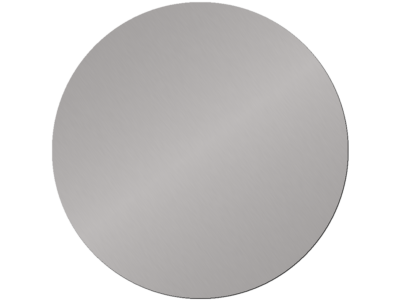
Iridium target – Ø19 x 1.5mm disc, 99.99% Ir
Iridium sputter coater target – Ø19 x 1.5mm disc, 99.99% Ir (each)
Price On Request Read more -

Iridium target – Ø24 x 0.3mm disc, 99.99% Ir
Iridium sputter coater target, Ø24 x 0.3mm disc, 99.99% Ir (each)
Price On Request Read more -

Iridium target – Ø38 x 0.3mm disc, 99.99% Ir
Iridium sputter coater target – Ø54 x 0.3mm disc, 99.99% Al (each)
Price On Request Read more -

Iridium target – Ø57 x 0.3mm disc, 99.99% Ir
Iridium sputter coater target – Ø57 x 0.3mm disc, 99.99% Ir (each)
Price On Request Read more -

Iridium target – Ø60 x 0.3mm disc, 99.99% Ir
Iridium sputter coater target – Ø60 x 0.3mm disc, 99.99% Ir (each)
Price On Request Read more -

Iridium Sputter Target, Ø28 x 0.3mm Disc, 99.99% Ir
Iridium Sputter Target, Ø28 x 0.3mm Disc, 99.99% Ir (each)
Price On Request Read more -
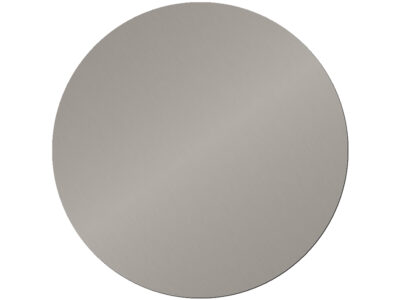
Iridium Sputter Target, Ø57 x 0.1mm Disc, 99.99% Ir
Iridium Sputter Target, Ø57 x 0.1mm Disc, 99.99% Ir (each)
Price On Request Read more -

Iridium target – Ø54 x 0.3mm disc, 99.99% Ir
Iridium sputter coater target – Ø54 x 0.3mm disc, 99.99% Al
Price On Request Read more
Indium Tin Oxide (ITO) targets
-
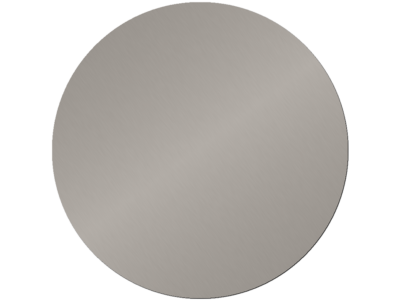
ITO (Indium Tin Oxide) target – Ø28 x 3.2mm disc, including 1.2mm thick copper backing plate – 90/10 Wt% In2O3/SnO2- 99.99%
ITO (Indium Tin Oxide) sputter coater target – Ø28 x 3.2mm disc, including 1.2mm thick copper backing plate – 90/10 Wt% In2O3/SnO2- 99.99% (each)
Price On Request Read more -

ITO (Indium Tin Oxide) target – Ø38 x 3.0mm, disc
ITO (Indium Tin Oxide) sputter coater target Ø38 x 3.0mm disc, including 1mm thick copper backing plate, 90/10 Wt% In2O3/SnO2- 99.99% (each)
Price On Request Read more -

ITO (Indium Tin Oxide) target – Ø57 x 3.0mm disc, on 1mm thick Cu backing plate
ITO (Indium Tin Oxide) sputter coater target Ø57 x 3.0mm disc, including 1mm thick copper backing plate, 90/10 Wt% In2O3/SnO2- 99.99% (each)
Price On Request Read more -

ITO (Indium Tin Oxide) Sputter Target Ø54 x 3.0mm Disc, including 1mm thick copper backing plate, 90/10 Wt% In2O3/SnO2, 99.99%
ITO (Indium Tin Oxide) Sputter Target Ø54 x 3.0mm Disc, including 1mm thick copper backing plate, 90/10 Wt% In2O3/SnO2, 99.99% (each)
Price On Request Read more -
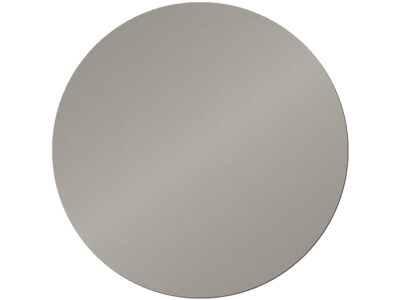
Indium Tin Oxide target (ITO), Ø54 x 2mm (90/10- 99.99%)
Indium tin oxide (ITO) sputter coater target – 90/10 Ø 54 x 2mm, high purity 99.99%
Price On Request Read more
Nickel (Ni) targets
-
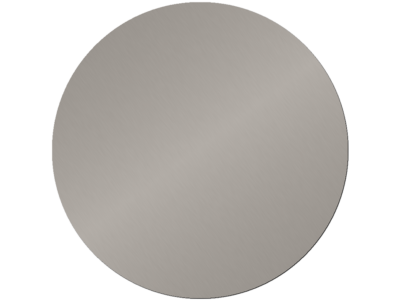
Nickel target – Ø19 x 1.5mm disc, 99.98% Ni
Nickel sputter coater target – Ø19 x 1.5mm disc, 99.98% Ni (each)
Price On Request Read more -

Nickel target – Ø38 x 0.5mm, 99.99% Ni
Nickel sputter coater target – Ø38 x 0.5mm- 99.99% Ni (each)
Price On Request Read more -

Nickel target – Ø50 x 0.075mm disc, 99.98% Ni
Nickel sputter coater target – Ø50 x 0.075mm disc, 99.98% Ni (each)
Price On Request Read more -

Nickel target – Ø57 x 0.075mm, 99.98% Ni
Nickel sputter coater target, Ø57 x 0.075mm, 99.98% Ni (each)
Price On Request Read more -

Nickel target – Ø60 x 0.075mm disc, 99.98% Ni
Nickel sputter coater target – Ø60 x 0.075mm disc, 99.98% Ni (each)
Price On Request Read more -

Nickel target – Ø54 x 0.075mm disc, 99.98% Ni
Nickel sputter coater target – Ø54 x 0.075mm disc, 99.98% Ni
Price On Request Read more
Palladium (Pd) targets
-
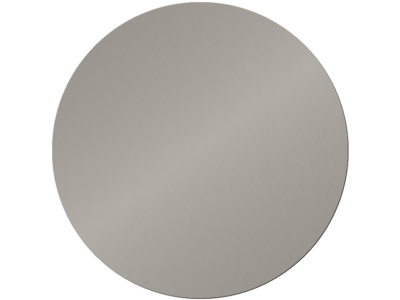
Palladium target – Ø54 x 0.1mm disc- 99.99% Pd
Palladium sputter coater target – Ø54 disc, 99.99% Pd
Price On Request Read more -

Palladium target – Ø54 x 0.2mm disc, 99.99% Pd
Palladium sputter coater target – Ø54 disc, 99.99% Pd
Price On Request Read more -

Palladium target – Ø19 x 1.5mm disc, 99.99% Pd
Palladium sputter coater target – Ø19 x 1.5mm disc, 99.99% Pd (each)
Price On Request Read more -

Palladium target – Ø50 x 0.1mm disc, 99.99% Pd
Palladium sputter coater target – Ø50 x 0.1mm disc, 99.99% Pd (each)
Price On Request Read more -

Palladium target – Ø57 x 0.1mm disc, 99.99% Pd
Palladium sputter coater target – Ø57 x 0.1mm disc 99.99% Pd (each)
Price On Request Read more -

Palladium target – Ø57 x 0.2mm disc, 99.99% Pd
Palladium sputter coater target – Ø57 x 0.2mm disc, 99.99% Pd (each)
Price On Request Read more -

Palladium target – Ø60 x 0.1mm disc, 99.99% Pd
Palladium sputter coater target – Ø60 x 0.1mm disc, 99.99% Pd (each)
Price On Request Read more -

Palladium target – Ø60 x 0.2mm disc, 99.99% Pd
Palladium sputter coater target – Ø60 x 0.2mm disc, 99.99% Pd (each)
Price On Request Read more -

Palladium target – Ø62 x 0.1mm disc, 99.99% Pd
Palladium sputter coater target – Ø62 x 0.1mm disc, 99.99% Pd (each)
Price On Request Read more -

Palladium Sputter Target, Ø28 x 0.2mm Disc, 99.99% Pd
Palladium Sputter Target, Ø28 x 0.2mm Disc, 99.99% Pd (each)
Price On Request Read more -

Palladium Sputter Target, Ø28 x 0.4mm Disc, 99.99% Pd
Palladium Sputter Target, Ø28 x 0.4mm Disc, 99.99% Pd (each)
Price On Request Read more
Platinum Palladium (PtPd) targets
-

Palladium target – Ø54 x 0.1mm disc- 99.99% Pd
Palladium sputter coater target – Ø54 disc, 99.99% Pd
Price On Request Read more -

Palladium target – Ø54 x 0.2mm disc, 99.99% Pd
Palladium sputter coater target – Ø54 disc, 99.99% Pd
Price On Request Read more -

Palladium target – Ø19 x 1.5mm disc, 99.99% Pd
Palladium sputter coater target – Ø19 x 1.5mm disc, 99.99% Pd (each)
Price On Request Read more -

Palladium target – Ø50 x 0.1mm disc, 99.99% Pd
Palladium sputter coater target – Ø50 x 0.1mm disc, 99.99% Pd (each)
Price On Request Read more -

Palladium target – Ø57 x 0.1mm disc, 99.99% Pd
Palladium sputter coater target – Ø57 x 0.1mm disc 99.99% Pd (each)
Price On Request Read more -

Palladium target – Ø57 x 0.2mm disc, 99.99% Pd
Palladium sputter coater target – Ø57 x 0.2mm disc, 99.99% Pd (each)
Price On Request Read more -

Palladium target – Ø60 x 0.1mm disc, 99.99% Pd
Palladium sputter coater target – Ø60 x 0.1mm disc, 99.99% Pd (each)
Price On Request Read more -

Palladium target – Ø60 x 0.2mm disc, 99.99% Pd
Palladium sputter coater target – Ø60 x 0.2mm disc, 99.99% Pd (each)
Price On Request Read more -

Palladium target – Ø62 x 0.1mm disc, 99.99% Pd
Palladium sputter coater target – Ø62 x 0.1mm disc, 99.99% Pd (each)
Price On Request Read more -

Palladium Sputter Target, Ø28 x 0.2mm Disc, 99.99% Pd
Palladium Sputter Target, Ø28 x 0.2mm Disc, 99.99% Pd (each)
Price On Request Read more -

Palladium Sputter Target, Ø28 x 0.4mm Disc, 99.99% Pd
Palladium Sputter Target, Ø28 x 0.4mm Disc, 99.99% Pd (each)
Price On Request Read more
Platinum (Pt) targets
-
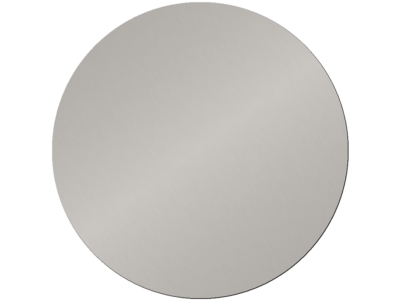
Platinum target – Ø54 x 0.1mm disc, 99.99% Pt
Platinum sputter coater target – Ø54 disc,99.99% Pt
Price On Request Read more -

Platinum target – Ø54 x 0.2mm disc, 99.99% Pt
Platinum sputter coater target – Ø54 disc,99.99% Pt
Price On Request Read more -

Platinum target – Ø19 x 1.5mm disc, 99.99% Pt
Platinum sputter coater target – Ø19 x 1.5mm disc, 99.99% Pt (each)
Price On Request Read more -

Platinum target – Ø24 x 0.2mm disc, 99.99% Pt
Platinum sputter coater target – Ø24 x 0.2mm disc, 99.99% Pt (each)
Price On Request Read more -

Platinum target – Ø38 x 0.2mm disc, 99.99% Pt
Platinum sputter coater target – Ø38 x 0.2mm disc, 99.99% Pt (each)
Price On Request Read more -

Platinum target – Ø38 x 0.4mm disc, 99.99% Pt
Platinum sputter coater target – Ø38 x 0.4mm disc, 99.99% Pt (each)
Price On Request Read more -

Platinum target – Ø50 x 0.1mm disc, 99.99% Pt
Platinum sputter coater target – Ø50 x 0.1mm disc, 99.99% Pt (each)
Price On Request Read more -

Platinum target – Ø50 x 0.2mm disc, 99.99% Pt
Platinum sputter coater target – Ø50 x 0.2mm disc, 99.99% Pt (each)
Price On Request Read more -

Platinum target – Ø57 x 0.1mm disc, 99.99% Pt
Platinum sputter coater target – Ø57 x 0.1mm disc, 99.99% Pt (each)
Price On Request Read more -

Platinum target – Ø57 x 0.2mm disc, 99.99% Pt
Platinum sputter coater target – Ø57 x 0.2mm disc, 99.99% Pt (each)
Price On Request Read more -

Platinum target – Ø60 x 0.1mm disc, 99.99% Pt
Platinum sputter coater target – Ø60 x 0.1mm disc, 99.99% Pt (each)
Price On Request Read more -

Platinum target – Ø60 x 0.2mm disc, 99.99% Pt
Platinum sputter coater target – Ø60 x 0.2mm disc, 99.99% Pt (each)
Price On Request Read more -

Platinum target – Ø62 x 0.1mm disc, 99.99% Pt
Platinum sputter coater target – Ø62 x 0.1mm disc, 99.99% Pt (each)
Price On Request Read more -

Platinum target – Ø62 x 0.2mm disc, 99.99% Pt
Platinum sputter coater target – Ø62 x 0.2mm disc, 99.99% Pt (each)
Price On Request Read more -

Platinum Sputter Target, Ø28 x 0.2mm Disc, 99.99% Pt
Platinum Sputter Target, Ø28 x 0.2mm Disc, 99.99% Pt (each)
Price On Request Read more -

Platinum Sputter Target, Ø28 x 0.4mm Disc, 99.99% Pt
Platinum Sputter Target, Ø28 x 0.4mm Disc, 99.99% Pt (each)
Price On Request Read more
Silver (Ag) targets
-
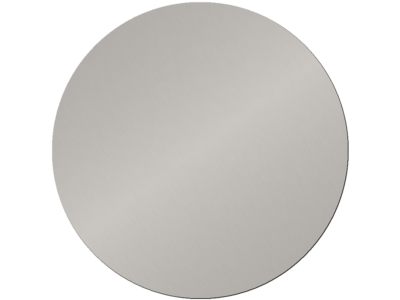
Silver target – Ø19 x 1.5mm disc, 99.99% Ag
Silver sputter coater target – Ø19 x 1.5mm disc, 99.99% Ag (each)
Price On Request Read more -

Silver target – Ø38 x 0.25mm disc, 99.99% Ag
Silver sputter coater target – Ø38 x 0.25mm disc 99.99% Ag (each)
Price On Request Read more -

Silver target – Ø50 x 0.25mm disc, 99.97% Ag
Silver sputter coater target – Ø50 x 0.25mm disc, 99.97% Ag (each)
Price On Request Read more -

Silver target – Ø57 x 0.25mm disc, 99.97% Ag
Silver sputter coater target – Ø57 x 0.25mm disc, 99.97% Ag (each)
Price On Request Read more -

Silver target – Ø60 x 0.25mm disc, 99.97% Ag
Silver sputter coater target – Ø60 x 0.25mm disc, 99.97% Ag (each)
Price On Request Read more -

Silver target – Ø54 x 0.25mm disc, 99.97% Ag
Silver sputter coater target – Ø54 x 0.25mm disc, 99.97% Ag
Price On Request Read more
Tungsten (W) targets
-
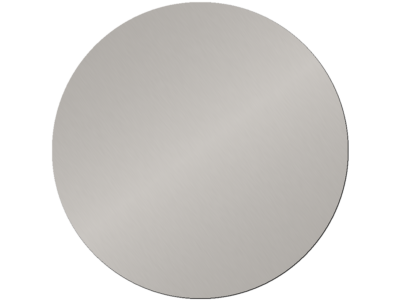
Tungsten target – Ø19 x 1.5mm disc, 99.95% W
Tungsten sputter coater target – Ø19 x 1.5mm disc, 99.95% W (each)
Price On Request Read more -

Tungsten target – Ø24 x 0.3mm disc, 99.95% W
Tungsten sputter coater target – Ø24 x 0.3mm disc, 99.95% W (each)
Price On Request Read more -

Tungsten target – Ø38 x 3.2mm disc, 99.95% W
Tungsten sputter coater target – Ø38 x 3.2mm disc, 99.95% W (each)
Price On Request Read more -

Tungsten target – Ø57 x 0.25mm disc, 99.95% W
Tungsten sputter coater target – Ø57 x 0.25mm disc, 99.95% W (each)
Price On Request Read more -

Tungsten target – Ø54 x 0.25mm disc, 99.95% W
Tungsten sputter coater target – Ø54 x 0.25mm disc, 99.95% W
Price On Request Read more
